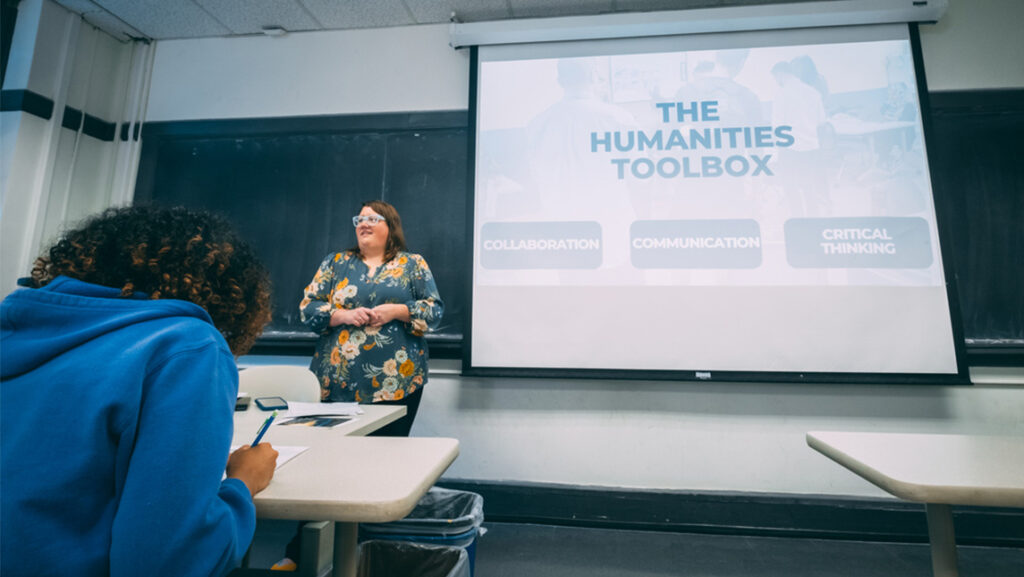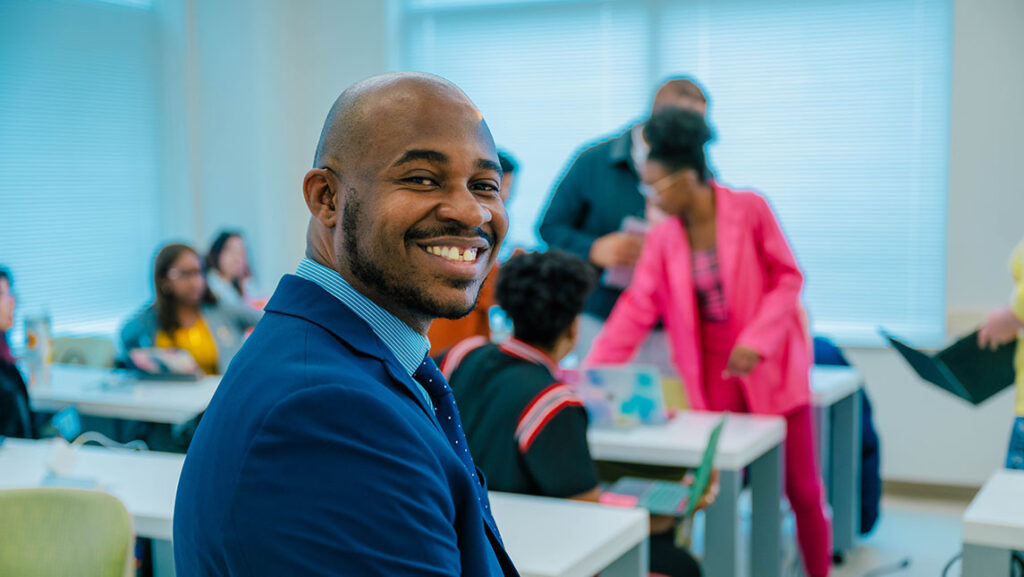Repost from UNCG School of Education
Aerin W. Benavides and Lacey Huffling, graduate students in the Teacher Education and Higher Education program in the UNCG School of Education, provide their daily account of life out in the field during the 2013 Rockfish Herpetological Research Experience as part of the HERPs Project.
Sunday
Aerin: I love Rockfish! At this HRE we too get to ‘go to camp’ and stay in the hotel rooms at the lodge on the property. For some reason, this helps me feel that ‘team spirit’ as an integral part of the program, 24 hours a day. As part of Dr. Carlone’s human research team this year, staying connected to it all helps me as a researcher to have a deeper understanding of all the forces at play. I become a better observer, and my experience as a human researcher at last year’s HRE’s helps me feel confident I can get the job done this year, and improve on it. My best part of the first day is getting to pick up participants on the way that would not have been able to go to Camp Rockfish otherwise because their families just can’t afford or can’t arrange for transportation from Greensboro to Rockfish (near Fayetteville). I was a little sad that David’s (not his real name) mom decided to drive him at the last minute because on the car ride I get to know the kids better. I was picking up Hannah (not her real name), and Sandy’s (not her real name) parents drove her to my house from Winston-Salem. Sandy was a talker. Within a few minutes both Hannah and I knew all the places Sandy had lived and had intimate knowledge of her vast array of friends and step-siblings. I even heard all about that time she got suspended from school, and what that terrible teacher was like, and how much she liked art and the art teacher. Hannah was kind of quiet, but she did tell me she was the oldest, often responsible for her younger siblings’ care, so this week of the HRE (Herpetological Research Experience) sleeping in a cabin with other high school girls was a time for her to be a kid and have fun. I was glad for her. I love the feeling I am helping provide this amazing opportunity free of cost to interested low income kids.
Lacey: The Rockfish HRE is about to get under way, and I find myself reflecting on all the hours spent recruiting students, calling parents, and maintaining paperwork. As the students begin to arrive, I know that all those hours were well spent. Yet, I am still nervous about the week to come. Will we find lizards? I have already had two wild caught lizards brought to me by SRAs (student research assistants). Plus, I have four captive anoles, and we have Roscoe, the large bearded dragon that the camp owns. Yet, I know that fieldwork can be unpredictable and so I find myself scouting out new areas of the camp to explore in the week to come.
Monday
Aerin: This year I am observing our second year students, we call them SRA’s (Student Research Assistants) I got to know many of them well last year at the HRE’s, so this is a follow up study. First, I go to snakes today to observe Nancy (not her real name). She’s an advocate for frogs, very active in the Raleigh community and what we at the HRE call an ‘expert’. We mix not only gender and race in each group of students at the HRE, we also mix ‘experts’ and ‘novices’ in herpetological science. She was such an expert she trumped the UNCG instructor at times in the snake project, almost having a student reach into a cage for a wild snake without clearance from the project leader, Ann Sommers, because she’d worked at the North Carolina Museum of Natural Science before and had people reach in for their captive snakes. Ann was good about explaining why the student couldn’t just reach in, because it was a wild caught snake. Whew!
Lacey: What a wonderful first day for our lizard research study! My first group of students caught two anoles and one fence lizard. They also were experts at catching frogs as they caught and identified three different frog species. Unfortunately, the new lizard traps we set out do not seem to be working, because the crickets we used for bait have escaped. This evening after the frog calls reminded me why I am always so impressed with our HRE staff. Several staff members stayed up late helping me track down fluorescent powder so that we can try to track lizards tomorrow night during the night hike.
Tuesday
Aerin: This is the day I get to observe the SRA at Lacey’s lizard project. He’s a student, Francisco (not his real name) I observed intensely last year and I look forward to seeing how he will do on the job as Lacey’s research assistant this year. She’s a great teacher, allows students to do things hands on, and works oh-so-smoothly with those high school kids. She really knows how to encourage them to love science. He was nervous today—come to think of it, we didn’t have the lizard project at the HRE he went to last year. Lacey researched it and developed it on her own last year. I remember we bought a dozen lizards from Carolina Biological Supply in case we didn’t catch any, and we caught tons to measure, weigh, etc. So this year I saw there were fewer bought lizards, she too had built up her confidence the kids would find wild specimens to learn how to ‘process’ by weighing and measuring them. Francisco was good at catching them with his hands or with the lasso, and he was kind to work with first year students one-on-one. He didn’t give answers away, he was good about having them find things out for themselves. My biggest achievement today was that the black lights I ordered before camp for the fluorescent tracking did arrive by UPS in time to do the activity tonight! We can really do this. . . Dr. Matthews had suggested it and between the not being able to find the fluorescent powders and no black lights, we were not sure if we could pull it off or not. . .Lacey and Rada (the biologist from UNCG) found some in a Crayola kit we could use. The kids had so much fun with it they marked their faces with ‘war paint’ to go out and track lizards with the black lights at night. I ran the art elective tonight, and Sandy was my one and only student making models of herps. She did like art, and did a great job too! Her model turtle was incredible!
Lacey: Well, we definitely were on a roll today. My group caught six different lizard species today (anole, fence lizard, six-lined racerunner, five-lined skink, ground skink, southeastern five-lined skink). Though we did not find any new species to Rockfish, this was a record number of species captured in one day. During the afternoon while the participants were doing camp activities, a group of us went on a search for fluorescent powder. The best we could do was a glow in the dark Crayola chalk kit. When we got back to camp, we tried the chalk in the bathroom, and it was fluorescent! Now, we have to go set out the lizards, so we can track them tonight with the students. This is why I love science: creativity and problem solving at its finest.
Wednesday
Aerin: Back to observe Nancy, and the snakes project. I need to observe any progress in her SRA job. . . and she seems to still feel she has to do it her way first. I think she would rather run the snake project on her own. Ah!
Lacey: I now have a new favorite HRE elective: fluorescent dye tracking of lizards. Last night was so amazing. We could actually track the fence lizard into a bush and then up the side of the building. I was so proud of the students because they were so patient and so good at working together to follow the lizards’ trails. Luckily last night went well because this morning we had a thunderstorm watch, we were an hour late getting into the field, and we caught no lizards. We spotted a skink that ran up a tree, and we tried to catch a six-lined racerunner for twenty minutes with no success. However, the students still loved being outside, and I was proud of the teamwork they used trying to corner the racerunner. We were told last year by some visiting scientists that we would never successfully capture a racerunner because they have been clocked at speeds of 22 mph, and though we lose more than catch, we have caught three racerunner in the past two years and who knows maybe we will get a fourth by the end of the week.
Thursday
Aerin: The other human researchers on the team and I are going to run the exit interviews with all the participants today. We recruit professors, instructors, grad students, scientists, and teachers to help us interview the high school kids. In this way we find what our research questions ask, and we help evaluate the program, even ask for suggestions from the SRA’s about who may be a good first year participant to choose to come back next year. We audio record two interviews each, so we had a team of over a dozen interviewers! Planning and executing this was our job for the day.
Lacey: Today was the day of the anole. We caught four anoles in areas where we did not find anoles last year. The teacher in our group spotted the first anole, and I honestly thought she was looking at a leaf on a tree but then the leaf started to move. She was so proud of herself, especially since this was her second year with us. She didn’t find a lizard in the wild last year, so she was quite excited. As soon as the student grabbed the anole, he brought it straight to her so she could hold it. It was great to see the students bonding with their teacher.
Friday
Aerin: I get to go back and see how Lacey’s SRA, Francisco, is doing! I chose him to interview yesterday, since I had done his exit interview last year as well, and I found out a couple of things I passed on to Lacey. I saw she adapted his role to my feedback from his interview, giving him an opportunity to take some students hunting lizards on his own in a wooded area while she took other students nearby. He had expressed his wanting to lead a group. This working together helps us advance in an amazing way. The grand finale of the day was when he took a dive for the team into the bushes to catch a lizard by hand, and realizing it was a juvenile, was hesitant to ‘process’ it, but once caught, Lacey allowed him to see the job through.
Lacey: The last day of the HRE has arrived, and I am filled with excitement and sadness. Sad because I will miss the participants and the staff, but I am excited because we have had another successful year of HREs. I can tell my group is also feeling mixed emotions as they discuss how they want to stay longer at camp but also want to go home. They work well as a team and are able to catch and process three lizard species. Then before we know, our three hours are up, and we have to report back to the group. As I begin to help pack up, I find myself reviewing the events of the past week and brainstorming ideas for next summer. In education, we call this reflection and by reflecting, we refine our skills as educators.
Herpetology Education in Rural Places and Spaces (The HERP Project) supports educational, conservation and field ecology experiences related to herpetology, which is the study of reptiles (turtles, snakes, lizards, alligators) and amphibians (frogs and salamanders). For more information, please visit The HERP Project online.
VIDEO – Watch Kathy Matthews discuss the HERPs Project here
http://youtu.be/dHBc-BWYtCE


